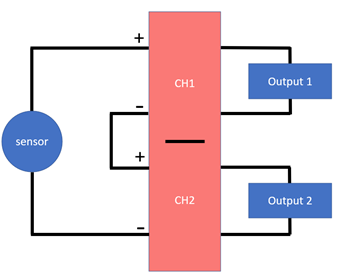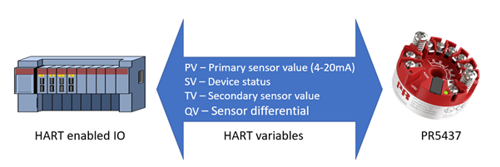Analog signal splitting – How to achieve 2 outputs from 1 input signal
The ability to split an analog signal is a much asked for feature. Whether to simply add a local indicator or to use the additional signal as an input to a separate process or system, signal splitting is a commonly used technique.
There are different ways of splitting a process signal, e.g.:
- using a dedicated signal splitter device such as a PR electronics 3109,
- by looping inputs in a dual channel device
- or by extracting an additional output as a HART variable in relevant devices.
Considering each method individually:
Use a dedicated "signal splitter"
There are many advantages to using a device designed for signal splitting.
For example, the PR 3109 offers the following features and benefits:
- Current, voltage or 2-wire transmitter input capability for various sensor types
- Signal conversion as well as direct splitting e.g. current input, voltage or current output
- Galvanic isolation for improved signal integrity.
Click for more information on the PR 3109 Isolated converter / splitter.
"Looping" inputs on a 2-channel device
Another method of achieving 2 outputs from a single 4…20 mA signal is to loop the signal in series across both input channels of a 2-channel device such as a PR 9106 HART transparent repeater.

This can also be achieved by connecting 2 separate single channel devices in a similar configuration.
Click for more information on the PR 9106 HART transparent repeater.
Although an effective method of splitting a process signal, care must be taken to ensure the impedance of the various inputs through which the 4...20 mA signal is being routed is within the load specifications.
Extracting HART variable
HART (Highway Addressable Remote Transducer) transmitters provide not only a standard analog output as per a standard transmitter but also make available 3 additional digital variables in addition to this primary variable (PV). These variables are secondary variable (SV), third variable (TV) and fourth variable (QV).
The digital variables are superimposed onto the analog signal by employing the frequency shift keying (FSK) encoding method. A compatible HART enabled device can then extract these additional variables for process control and maintenance purposes.

SMART HART transmitters such as the PR 5437 temperature transmitter can use the additional HART variables for communication of NE107 compliant alarms, secondary sensor values, differentials and much more.
Although easily capable of "signal splitting", HART transmitters offer many additional benefits to users.
Click for more information on the PR 5437 2-wire HART 7 temperature transmitter.
See the complete range of PR temperature transmitters

